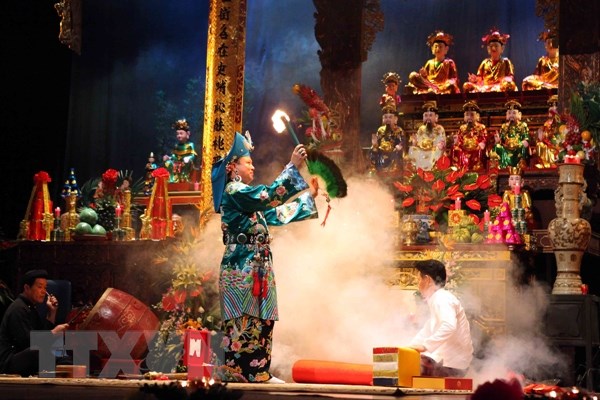The practice of worshiping the Three Palaces Mother Goddess is one of the unique cultural features of the Vietnamese people, honoring deities who protect nature, crops, health, and human life. Recognized by UNESCO as an intangible cultural heritage, this belief system venerates a hierarchy of Mother Goddesses who rule over realms of land, water, and sky.
1. Origin and Meaning
The Three Palaces worship practice has existed since ancient times, originating from reverence for female deities who oversee natural domains. “Three Palaces” represent three realms: the Heavenly Palace (sky), the Earthly Palace (land), and the Aquatic Palace (water). This folk belief aims to seek peace, health, and good harvests, while expressing gratitude to the gods who protect the community.
2. Main Goddesses of the Three Palaces
Heavenly Palace Mother Goddess (Mẫu Thượng Thiên): The goddess governing the sky, who grants favorable weather.
Earthly Palace Mother Goddess (Mẫu Thượng Ngàn): The goddess of mountains and forests, who safeguards the life of plants, animals, and crops.
Aquatic Palace Mother Goddess (Mẫu Thoải): The goddess of rivers and waters, who oversees activities on rivers and the prosperity of water resources.
3. Rituals and Practices in Worshiping the Three Palaces
Hầu đồng (Mediumship): A ritual where a medium communicates with the Mother Goddesses, embodying them through a trance state and performing symbolic acts to bless participants.
Other Ceremonies: These include offerings, prayers, and chầu văn singing, which honors and seeks blessings from the goddesses.
4. Famous Sites for Three Palaces Worship
The Dam Temple (Hanoi), Song Son Temple (Thanh Hoa), and Bao Ha Temple (Lao Cai) are renowned sites where sacred Mother Goddess rituals are held, attracting many participants each year.
This article highlights the cultural and spiritual value of the worship of the Three Palaces Mother Goddess, reflecting the Vietnamese people’s respect and love for nature.

